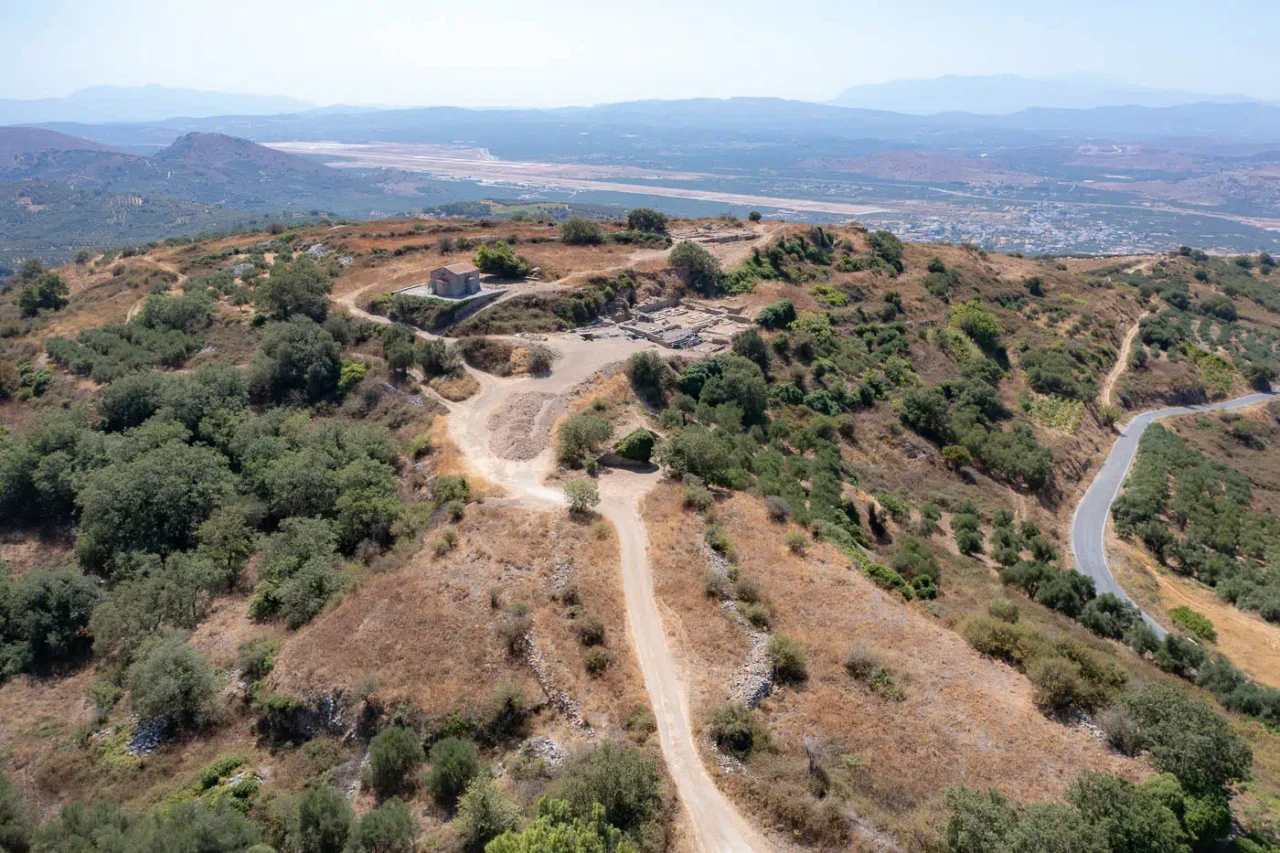
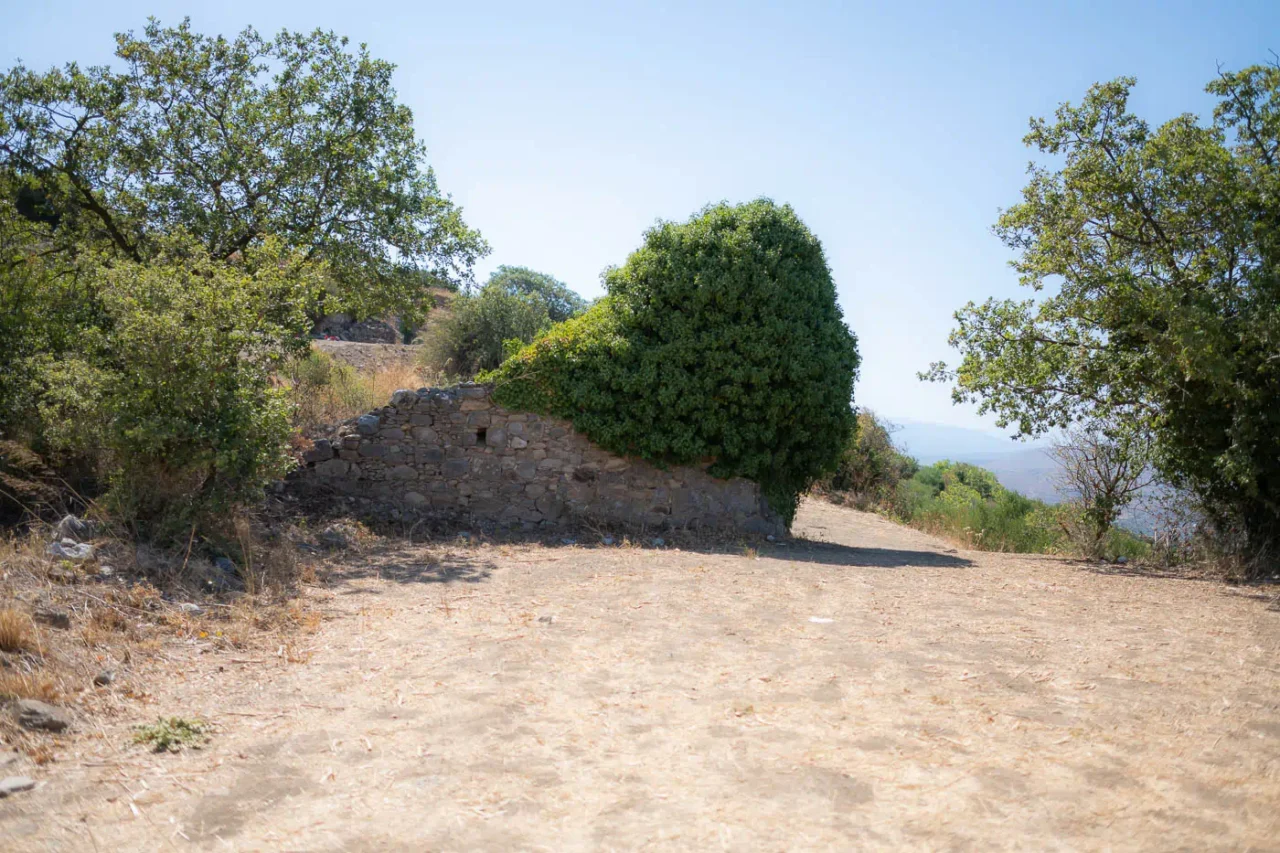
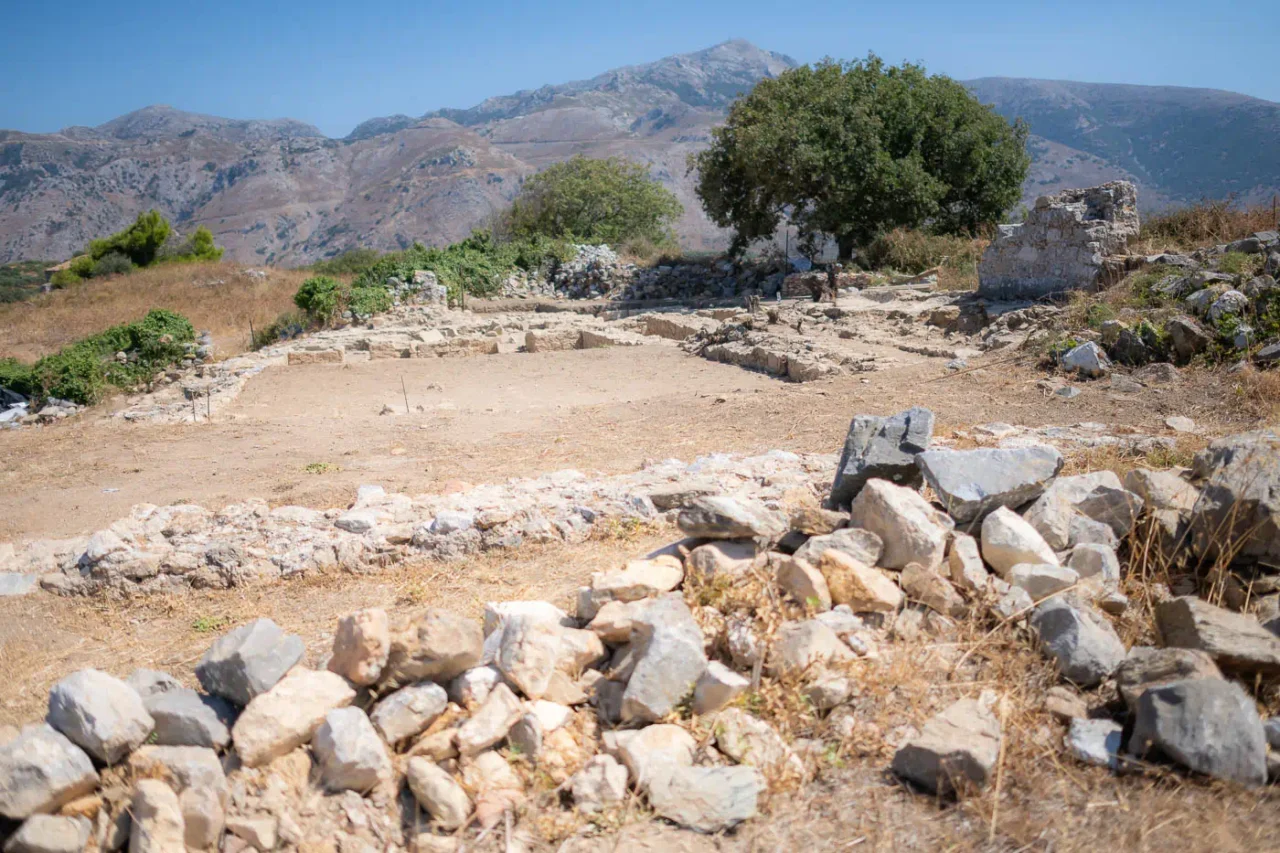
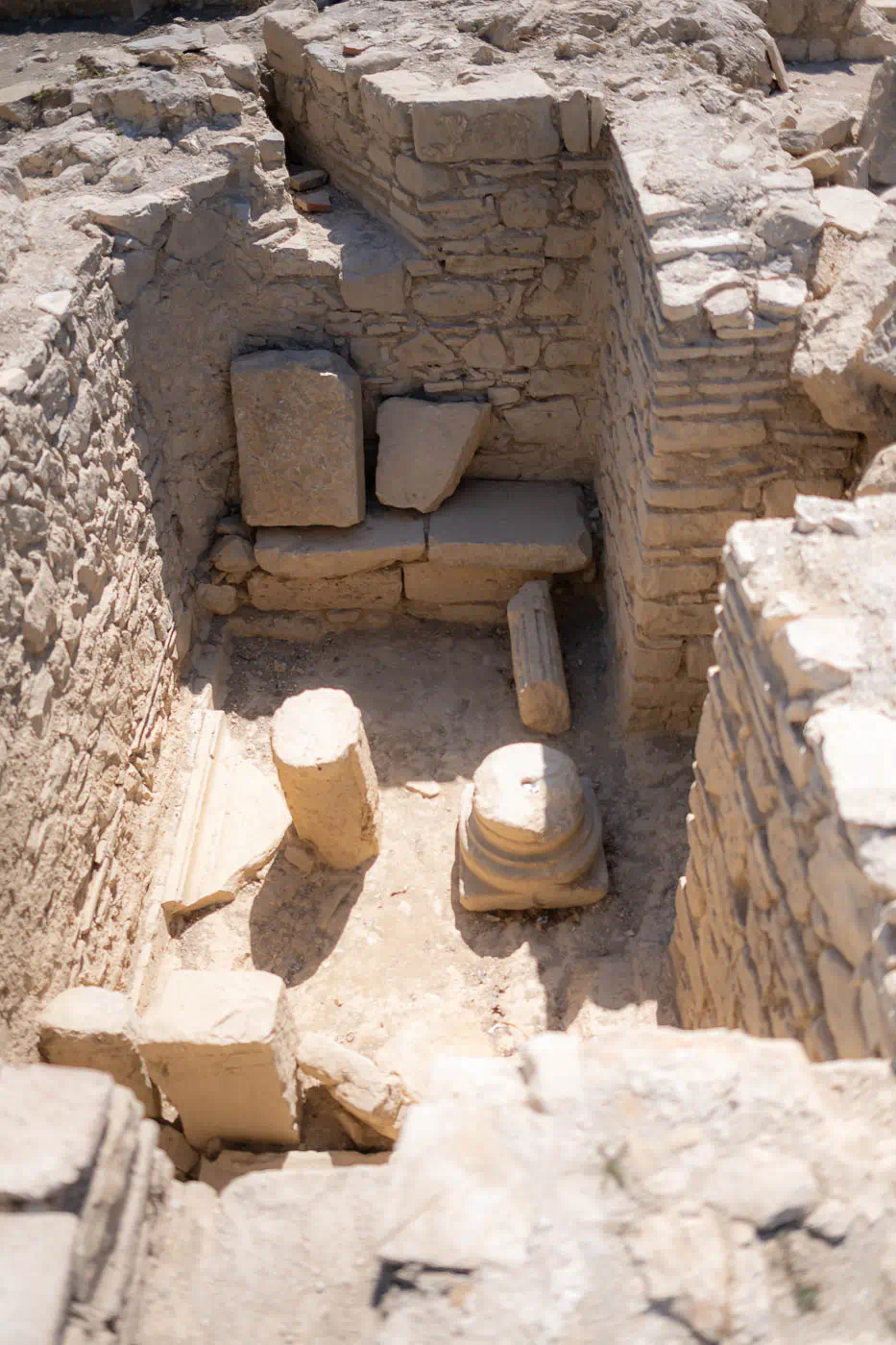
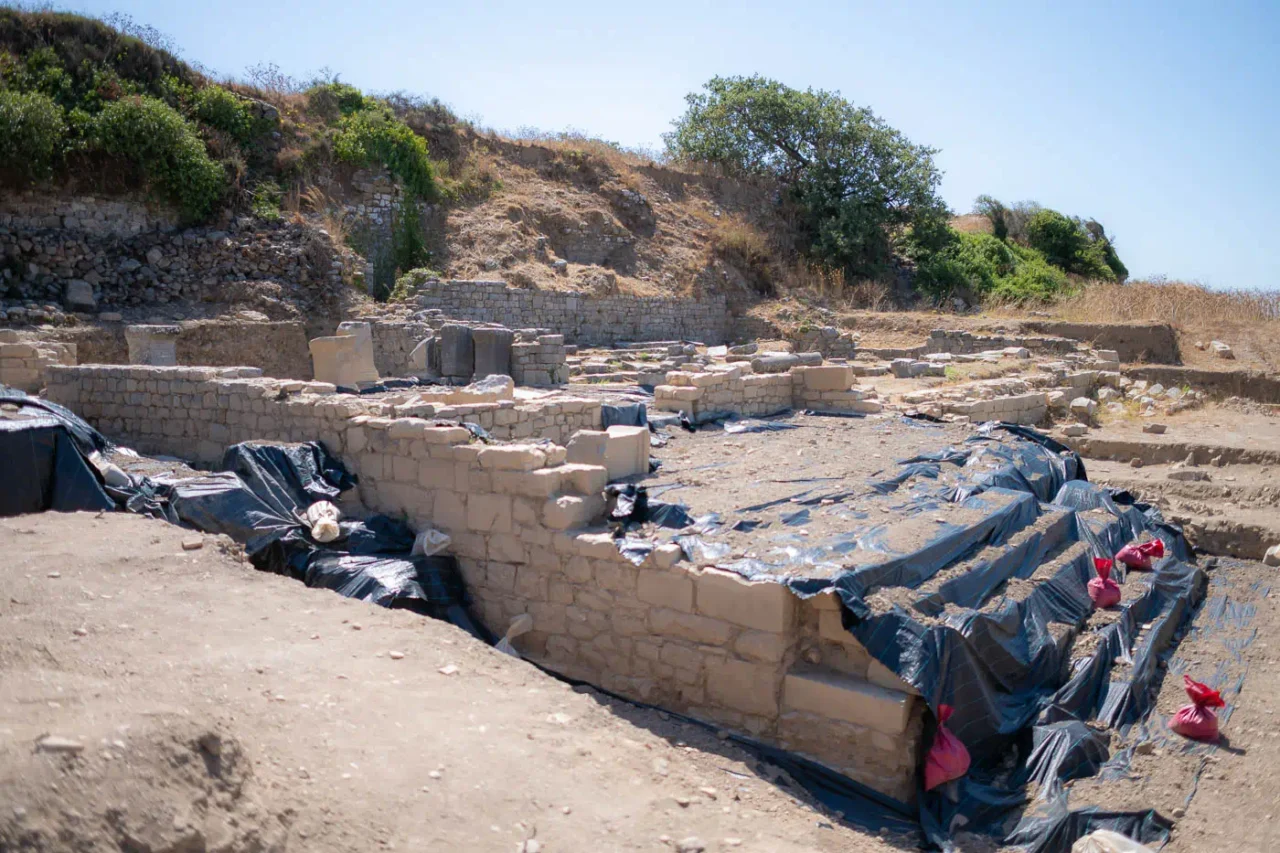
The Enigma of the Name
The ancient city of Lyktos, later known as Lyttos, presents an intriguing puzzle in its very name. The shift from Lyktos to Lyttos is not merely a matter of phonetic evolution within Greek. The two names likely have distinct etymological roots, suggesting a more complex history.
-
Lyktos: The original name, Lyktos, is believed to be of Pre-Greek, possibly Minoan, origin. It has been linked to the Sanskrit word “rikhta,” meaning “inheritance” or “legacy.” This interpretation aligns with Lyktos’s reputation as one of Crete’s oldest cities, possibly predating even the rise of Knossos. The name might reflect the city’s foundation on a territory inherited from an earlier civilization or a sense of continuity with a distant past.
-
Lyttos: The later name, Lyttos, also has Pre-Greek roots, potentially deriving from the Sanskrit “rûdha,” meaning “high land.” This reflects the city’s location on a mountainous terrain, contrasting with the broader valley where the original Lyktos might have been situated. The emergence of this new name could signify a shift in the city’s focus or a desire by later inhabitants, possibly Mycenaean Greeks, to distinguish themselves from the Minoan past.
The coexistence of both names in ancient texts, even when referring to the same city, hints at a complex interplay of cultural influences and historical shifts. The transition from Lyktos to Lyttos might mark a turning point in the city’s history, perhaps associated with the arrival of Mycenaean Greeks and their gradual dominance over the island.
Historical Periods
Minoan Era
While concrete archaeological evidence is limited, the Pre-Greek origin of the name Lyktos suggests a significant Minoan presence in the area. The city’s mention in Hesiod’s Theogony as the birthplace of Zeus further strengthens this association. It is plausible that Lyktos was a prominent Minoan center, possibly even predating the rise of Knossos as the dominant power on Crete. The fertile valley surrounding the city would have provided ample resources for a thriving Minoan settlement.
During the 2022 excavations, a team of archaeologists from the Archaeological Society of Athens uncovered evidence of human activity dating back to the Protogeometric and Early Iron Age periods in the area of the ancient city of Lyktos. This evidence, consisting of pottery and organic remains, indicates that the city was inhabited during the 8th and 7th centuries BC, a period when the city was praised by both Homer and Hesiod.
The finds from the 2022 excavation contribute to a deeper understanding of the history of Lyktos and its broader archaeological context. The identification of human activity in the Protogeometric and Early Iron Age periods, along with the discovery of the Hellenistic structures, provides valuable insights into the city’s development over time. The ongoing research at Lyktos promises to further illuminate the city’s rich and complex past, contributing to a greater appreciation of its cultural heritage and historical significance. The archaeological remains at Lyktos span various periods, from the Minoan era to the Roman period. The most prominent structures visible today date back to the Hellenistic and Roman times.
Mycenaean Period
The appearance of the name Lyttos, associated with the “high land,” might coincide with the arrival of Mycenaean Greeks on Crete around the mid-second millennium BC. Linear B tablets from Knossos mention Lyktos as a palatial estate, suggesting its integration into the Mycenaean administrative system. The shift in focus from the valley to the highlands, reflected in the new name, could indicate a change in land use or a social division between the Mycenaean rulers in the lowlands and the Minoan population in the mountainous areas.
Archaic and Classical Periods
Lyktos continued to be a significant city-state during the Archaic and Classical periods. It was known for its strong Doric identity and close ties with Sparta. The city’s strategic location on the mountainous terrain provided a natural defense, contributing to its political independence and military prowess. Lyktos actively participated in Cretan inter-city conflicts, often clashing with its powerful neighbor, Knossos.
Hellenistic Era
The Hellenistic period was marked by intense rivalry and warfare among Cretan cities. Lyktos, despite its strategic advantages, suffered a devastating attack and destruction by the combined forces of Knossos and Gortyn in 220 BC. However, the city demonstrated remarkable resilience, recovering and even expanding its territory by conquering neighboring cities like Dreros and Milatos. Lyktos also engaged in diplomatic relations with external powers, including the Ptolemaic kingdom in Egypt and the Attalid dynasty in Pergamon.
The Hellenistic period witnessed a significant change in the city’s urban landscape. Large parts of the city were destroyed in 220 BC. The public buildings of Lyktos were monumentalized. They were built on a terrace supported by a large retaining wall on the north side. The lower part of the retaining wall dates back to the Hellenistic period. This suggests that the Hellenistic public buildings were also built on a terrace. The retaining wall was also the north wall of the public buildings. The main west-east street was located at the foot of this terrace. A monumental staircase led to the public buildings. The retaining wall of the terrace was thus an integral part of the Hellenistic building program. It is possible that the retaining wall was also part of the city’s fortifications. However, the surviving remains are too fragmentary to be certain. The most important public building was the Bouleuterion. It was a large rectangular building with a colonnaded courtyard. The Bouleuterion was used for meetings of the city council. It was also used for other public functions, such as religious ceremonies and theatrical performances. The Bouleuterion was destroyed in 220 BC. It was rebuilt in the Roman period.
Roman Period
The Roman conquest of Crete in 67 BC brought an end to the incessant warfare among Cretan cities. Lyktos, like other Cretan cities, became part of the Roman province. The city seems to have prospered under Roman rule, as evidenced by the construction of public buildings and the abundance of inscriptions and statues dedicated to Roman emperors. However, the archaeological record for this period remains limited, leaving many questions unanswered about the city’s urban development and social dynamics under Roman administration.
In the Roman period, the Bouleuterion was rebuilt. A new cult area, the Sebasteion, was added to the complex of public buildings. The Sebasteion was a large rectangular building with a colonnaded courtyard. It was used for the worship of the Roman emperor. The Sebasteion was decorated with statues and inscriptions dedicated to the emperor. The Bouleuterion and Sebasteion were destroyed by an earthquake in 365 AD. They were rebuilt in the early Byzantine period. The Bouleuterion and Sebasteion were destroyed again by an earthquake in 795 AD. They were abandoned after this earthquake
History of Excavations in Lyktos
The archaeological site of Lyktos has been the subject of international interest for archaeological excavations for over a century, from 1894 to 1995. Italian and British archaeologists, as well as the German University of Heidelberg, have expressed interest in excavating the site. Despite this interest, only four small-scale excavations have been conducted, all by Italian archaeologists in 1894, 1914, 1922, and 1924.
Early Excavations
The first scientific excavation at Lyktos was carried out by Federico Halbherr, the pioneer of Italian archaeology in Crete, in 1894. This excavation focused on the Roman forum of the city and resulted in the discovery of several inscribed bases. In 1914, another small excavation was conducted by Gaspare Oliverio, an Italian archaeologist, which also uncovered a series of Roman bases with inscriptions. In 1924, Doro Levi, another Italian archaeologist, carried out a more extensive excavation at Lyktos, focusing on a large building with an impressive colonnade. This excavation yielded several inscribed bases, some of which had been previously discovered by Halbherr and Oliverio.
Later Investigations
In the early 1950s, the Archaeological Service of Greece began conducting sporadic research at Lyktos. One of these investigations, led by N. Platon in 1953, involved the collection of bases that had been discovered by Levi in 1924. In the early 1980s, the Archaeological Service undertook more substantial excavations at Lyktos, which, along with the publication of the scientific journal “Lyktos,” renewed interest in the ancient city. In 1994, R. Schneider and A. Chaniotis, professors at the universities of Heidelberg and New York respectively, developed a program for the systematic research of Lyktos. This program, which was planned to be conducted in collaboration with G. Rethemiotakis, an archaeologist from the 23rd Ephorate of Prehistoric and Classical Antiquities, aimed to produce a topographic map of the area, study the artifacts from previous excavations, and conduct further excavations at the site. However, due to funding restrictions, the program was scaled back and eventually withdrawn.
Importance of the Excavations
The excavations at Lyktos have contributed significantly to our understanding of the city’s history and development. The discovery of the Roman forum, the large building with the colonnade, and the various inscribed bases has provided valuable insights into the city’s public life and religious practices. The excavations have also helped to clarify the city’s topography and chronology. Despite the limited extent of the excavations, they have yielded a wealth of information about Lyktos. The inscribed bases, in particular, have provided important evidence for the city’s history and institutions. The excavations have also helped to illuminate the city’s relations with other cities in Crete and beyond
Archaeological Site: Key Points
- The archaeological remains at Lyktos span various periods, from the Minoan era to the Roman period. The most prominent structures visible today date back to the Hellenistic and Roman times.
- The ancient city is situated on a hill near the modern village of Lyttos, offering strategic advantages and panoramic views of the surrounding valley.
- The exact dimensions of the ancient city are not precisely known due to the limited extent of archaeological excavations. However, estimates suggest that it covered a considerable area, reflecting its importance as a regional center.
- Lyktos holds historical significance as one of Crete’s oldest and most powerful city-states. Its Pre-Greek origins, association with the birthplace of Zeus, and active role in Cretan political and military affairs throughout the centuries highlight its enduring importance.
- The archaeological site of Lyktos is partially excavated, with ongoing research shedding light on its complex history and cultural heritage. The visible remains, including fortifications, public buildings, and residential areas, offer a glimpse into the city’s past glory.
References
Ta arxea ine anamesa se dio palies eklisies xtismenes apo tis petres tou arxrologikou xorou.
To meros ine panemorfo ke axizi na erthete mia volta me ta pedia sas.
Na ferete fai mazi sas na katsete na fate na pexoun ta pedia sas.
Exi katapliktiki thea sta lasithiotika,sto psiloriti,mexri ti thalasa,ke notia ta asterousia.
Tin anixi ine i pio omorfi epoxi gia na erthete.
New airport Kastelli.
Access
Short distance earth road















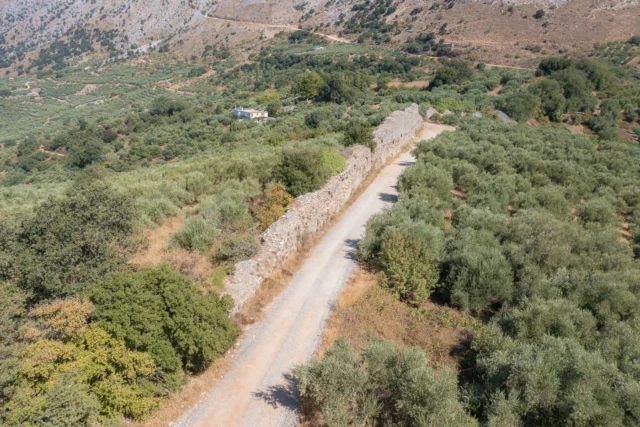

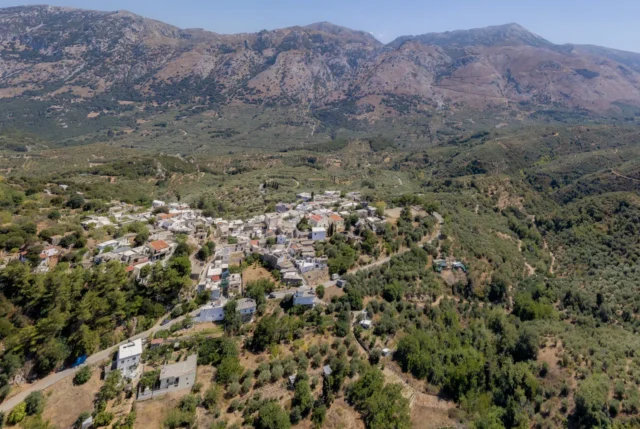

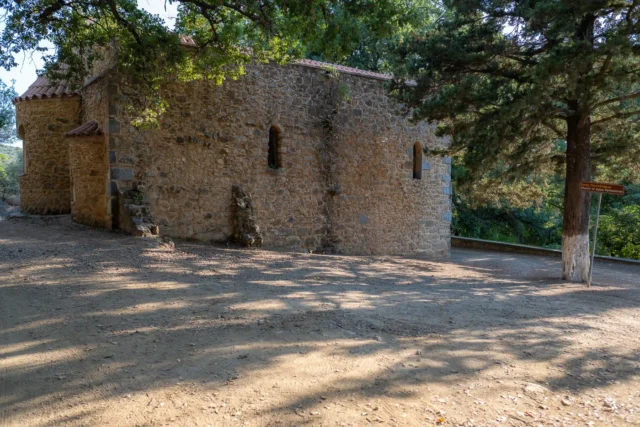





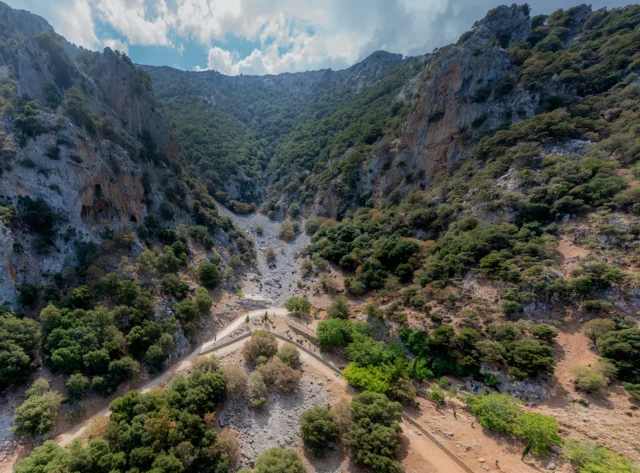
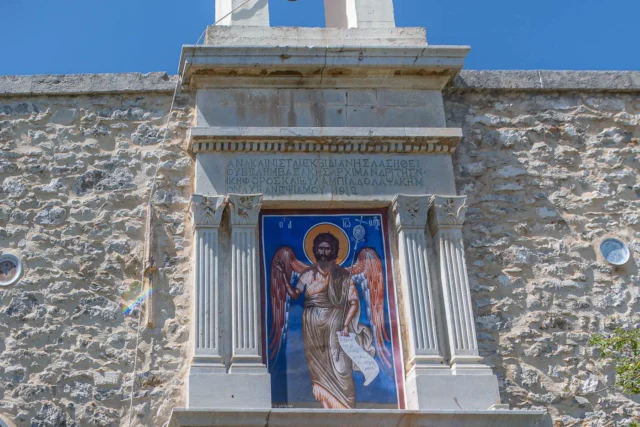
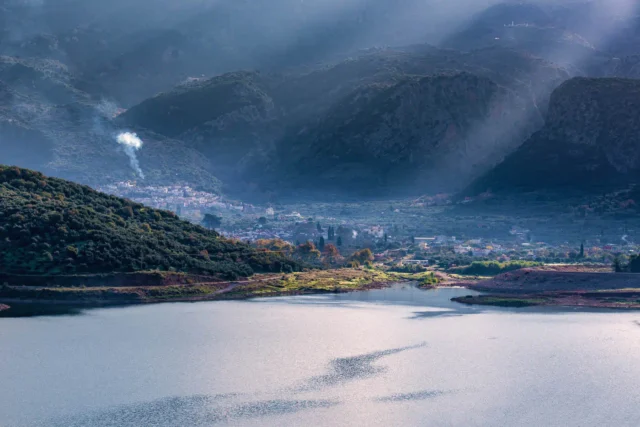

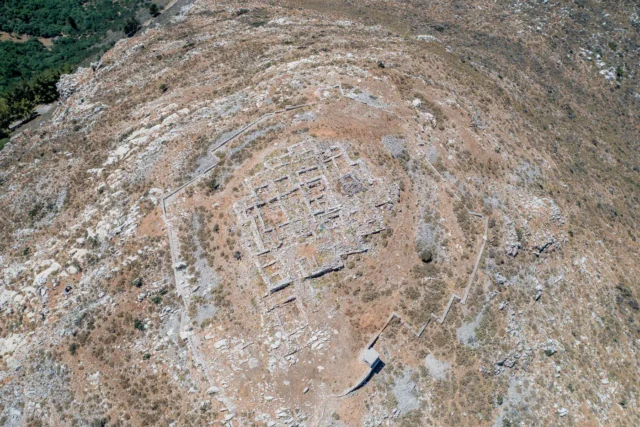
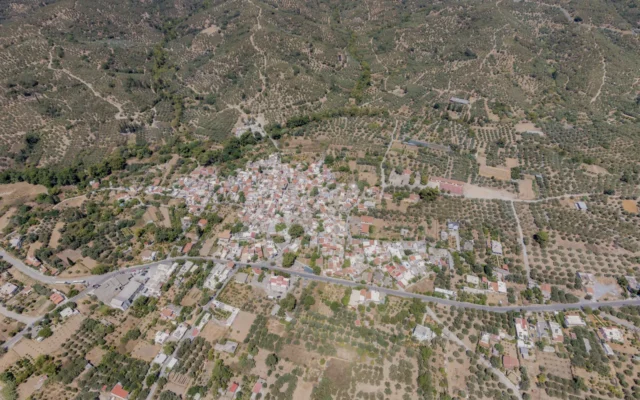
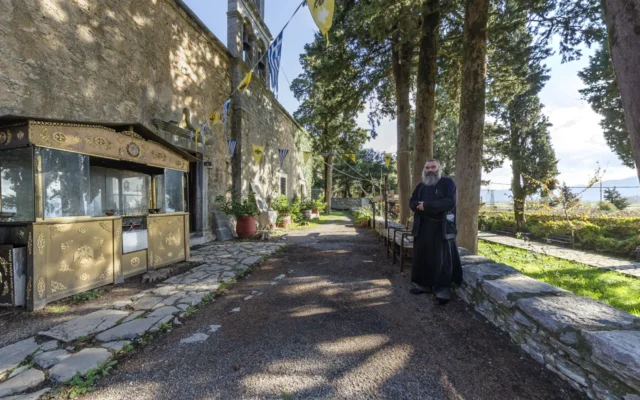


There are no comments yet.